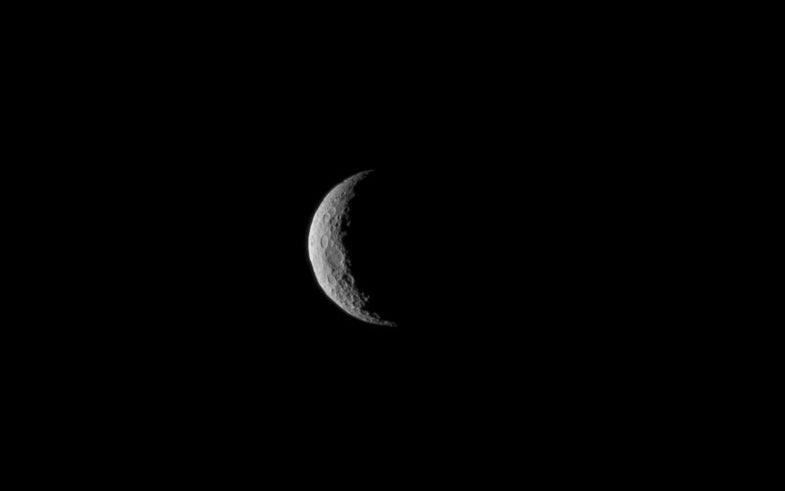For The First Time, A Manmade Spacecraft Is Orbiting A Dwarf Planet
Welcome to Ceres

At 7:39 EST this morning, the dwarf planet Ceres captured the Dawn spacecraft in its gravity. After a journey of more than seven years, the spacecraft will spend the next 16 months orbiting this tiny world 260 million miles away.
Dawn is not only the first spacecraft to orbit a dwarf planet, but the first to orbit two different worlds. It visited the asteroid Vesta between 2011 and 2012, returning loads of data and some amazing pictures. The two-stop journey would not have been possible without Dawn’s unique ion engines.
Now the spacecraft is orbiting Ceres at a height of approximately 38,000 miles. For the time being, Dawn is making its approach on a side of Ceres that faces away from the Sun. But by mid-April, Dawn will emerge from the dark side, descend to a height of 8,400 miles, and start sending home visuals and data. At its closest, Dawn will orbit Ceres at just 230 miles, mapping its topography, composition, and gravity in detail.
Situated in the asteroid belt between Mars and Jupiter, Ceres is considered to be an embryonic planet whose development froze midway through. Scientists hope that studying it will provide clues as to how planets form, and what kinds of factors cause some planets to become icy like the outer planets of our solar system, or dry and rocky like Earth.
Until now, Ceres has been shrouded in mystery. But as Dawn moves in, we’ll see this tiny planet at a resolution 800 times better than we have before. Expect to see some surprises along the way—including, maybe, cryovolcanoes, moons, and a subsurface ocean.